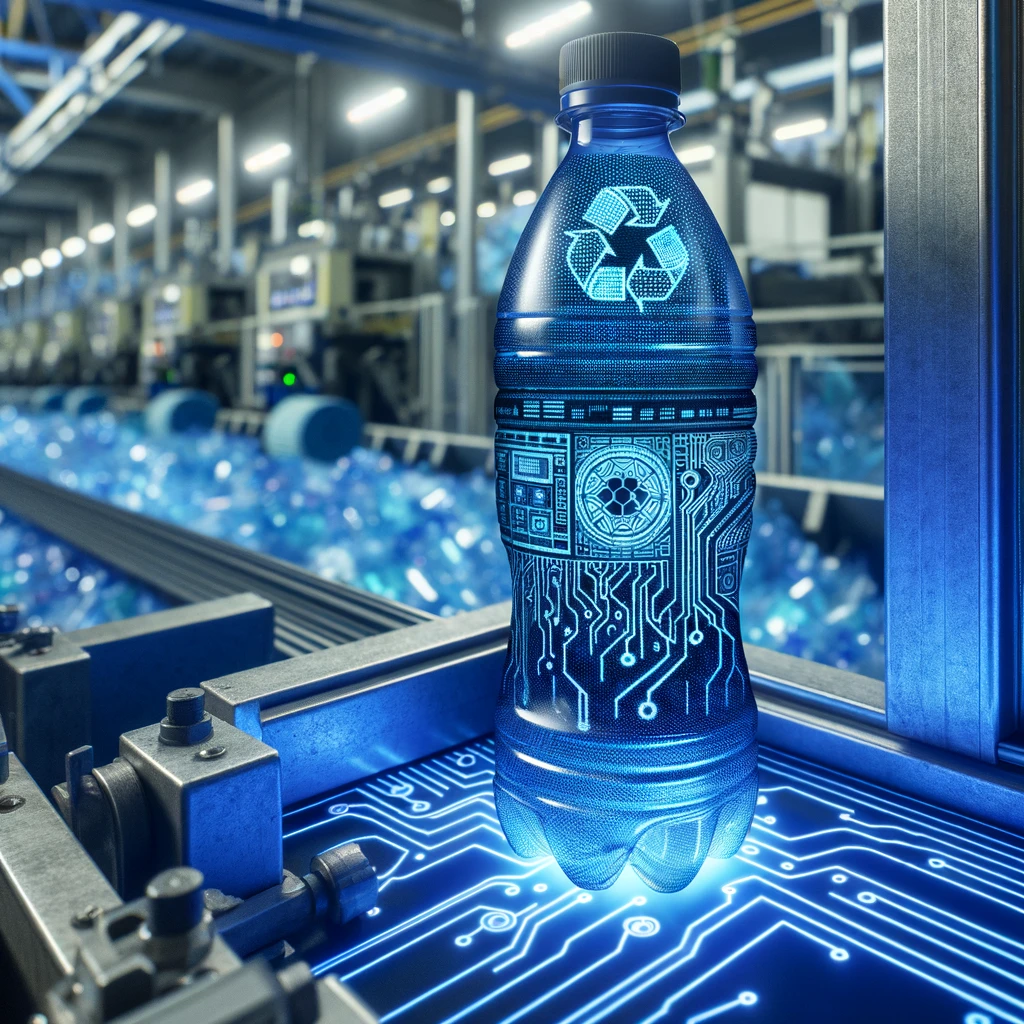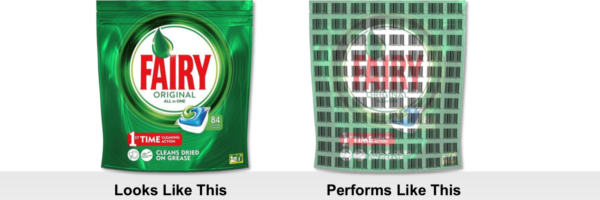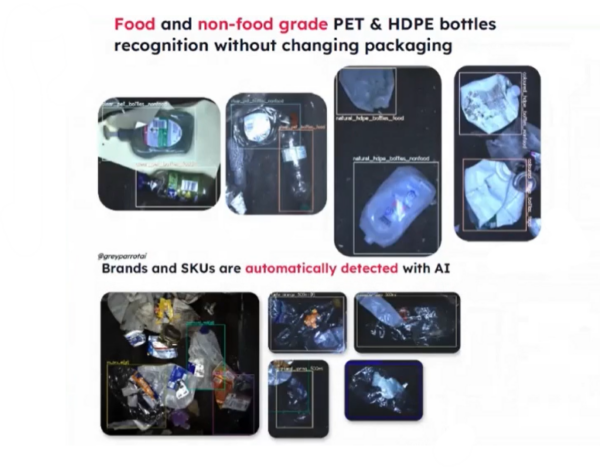Packaging Sorting 4.0: Digital Watermarks & Fluorescent Markers

The recycling industry faces significant challenges, particularly in accurately sorting and recycling mixed waste streams.
This is especially important for food-grade post-consumer recycled. Innovations such as digital watermarks and fluorescent markers offer promising solutions to these challenges, potentially revolutionizing the recycling process.
You can also read: The Technology Behind Food-Grade rPET
Food-Grade Plastics Recycling
Food-grade plastics, designated as safe for contact with food, are ubiquitous in packaging. Their recycling is crucial to minimize waste and environmental impact. However, the presence of food residues and the complexity of plastic polymers pose significant recycling challenges. Also, regulations like EC No 282/2008 from the EU and the FDA regulations demand that only materials that have been used for food-grade products can be used as input for recycled content in food packaging applications. This poses an additional challenge, differentiate between food, household, and personal care products. Normally, NIR (Near Infrared) is used to sort plastics, but only recognizes composition, not application. In consequence, efficiently identifying and separating these plastics is essential for effective recycling
Innovative Solutions: Digital Watermarks and Fluorescent Markers
Digital watermarks and fluorescent markers represent cutting-edge technologies designed to improve the sorting of recyclable materials. Digital watermarks, invisible to the naked eye, can encode information about the packaging material, facilitating automated sorting. Similarly, fluorescent markers, which glow under specific lighting conditions, allow for the quick identification of materials. These technologies can significantly enhance the precision and efficiency of the recycling process.
Benefits of Implementing Digital Watermarks and Fluorescent Markers
Implementing these technologies in the recycling process can lead to numerous benefits. Enhanced sorting accuracy increases the volume and quality of recyclable materials, directly improving recycling rates. This, in turn, yields significant environmental benefits, such as reduced resource depletion and lower carbon emissions, alongside economic advantages through the optimization of recycling operations.
Case Studies and Real-world Applications
Several pilot projects and industrial applications have demonstrated the potential of digital watermarks and fluorescent markers to transform recycling. For instance, the HolyGrail 2.0 project in Europe aims to assess the feasibility and efficiency of digital watermarks in improving packaging sorting. These real-world applications highlight the technologies’ capacity to increase recycling rates and support a more sustainable recycling ecosystem. Also, the Nextloopp project from Nextek has proven a high sorting efficiency for fluorescent markers and labels with commercial sorting equipment from TOMRA.

HolyGrail 2.0 aims to improve post-consumer recycling using digital watermarks, with the aim of moving closer to a circular economy. Courtesy of SolarImpulse Foundation.

Intelligent Markers Boosting the Technical and Economic Performance of Recycled Post Consumer PP Packaging. Courtesy of Nextek.
The integration of digital watermarks and fluorescent markers into recycling processes represents a significant step forward in addressing the challenges of food-grade plastic and post-consumer material recycling. By enhancing sorting accuracy and efficiency, these technologies pave the way for higher recycling rates, offering substantial environmental and economic benefits. As industries and consumers increasingly recognize the importance of sustainable recycling practices, adopting these innovative solutions becomes crucial for a greener future.
